Photography Forum
8/18/2017
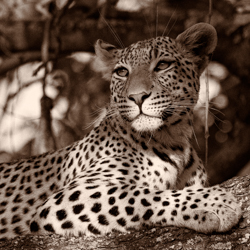
Photographing Leopards
Leopards are the most successful large carnivores in modern-day Africa. Their low-profile reclusiveness and opportunistic hunting of both large and small prey allows them to survive in deep wilderness as well as close proximity to humans. Although abundant, leopards are notoriously shy and hard to find, but travelers lucky enough to see them will almost unanimously agree that they are among the most photogenic animals in Africa.
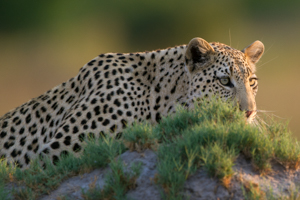 All eyes and ears.
All eyes and ears.
Leopards tend to be a little more active than lions, but are also most frequently encountered in a recumbent position, with droopy eyes and floppy ears: hardly an image that conveys the lethal strength and agility of these prolific hunters. Get your camera settings right, compose the image in your viewfinder, and wait patiently for some undetected stimulus to momentarily snap your leopard to attention. Once its curiosity is satisfied, the leopard will return to its relaxed state, so be ready for your brief window to get "the shot".
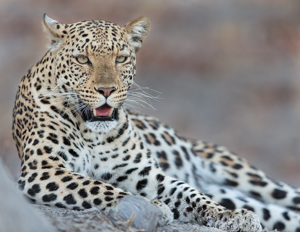 Portrait of a Prince.
Portrait of a Prince.
Unlike lions, leopards are highly solitary animals, and one very rarely sees more than one leopard at a sighting. They are also relatively small compared to lions, and often get lost in the lanscape if one tries to compose for wider-angle "leopard in habitat" images. On the other hand, a leopard's glowing eyes, beautifully patterned coat, and charismatic poise lend themselves perfectly to close-up portraits. Experiment with different compositions, but be sure to capture a few close-ups at every leopard sighting.
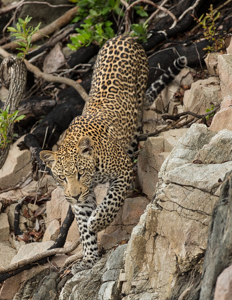
Catch me if you can.
To say that leopards move fast is an understatement, and capturing a moving leopard requires skill, anticipation, and a great deal of luck. Unless your goal is a blurred image to portray action, you will need a shutter speed of at least 1/500; set your camera to "burst mode" (High Speed Continuous Drive), and hold down the shutter as you pan with the moving leopard. Zoom out a little so that there is buffer space around the leopard - you can always crop in closer during post editing, but you can't bring back parts of the leopard that were cut out of the original image.
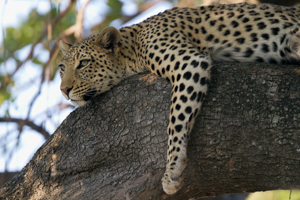
Vertically challenged.
A large part of the leopard's ecological success is due to its climbing skills, and the strength to hoist carcasses into trees beyond the reach of other predators. Seeing a leopard regally perched in the branches of a tree is one of safari's great sightings, but it also poses some photographic challenges, including dappled light, obstructing branches, and an over-exposed sky for background. There's not too much that one can do when dealt this hand, but set your expose for the leopard (not the background), and ask your guide to position the vehicle for an uncluttered view of the face.
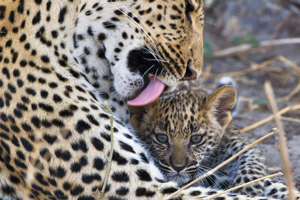
Rare as hen's teeth.
As solitary animals without the security of a pride, leopards are extremely protective of their babies and literally go into hiding for the first two months of a cub's life. Any photo of a leopard cub is special, and the same photographic principles apply as for adults (try for clear images of alert faces); capturing interaction between mother and cub adds a powerful emotional dimension to the image.
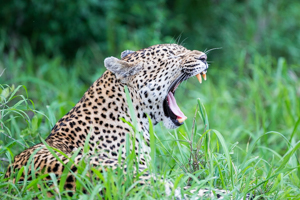
The mini-MGM roar.
Unlike lions, leopards do not roar; like their big cousins, however, they do yawn quite frequently and, captured as a still image, it can appear rather intimidating. What better way to impress your safari-naive friends regarding the great perils that you braved during your journey to the "dark continent"?!
8/18/2017
Readers' Submissions
«
previous
8/18/2017
Recipe of the Quarter
next »
 |
|  |
|  Share
Share










